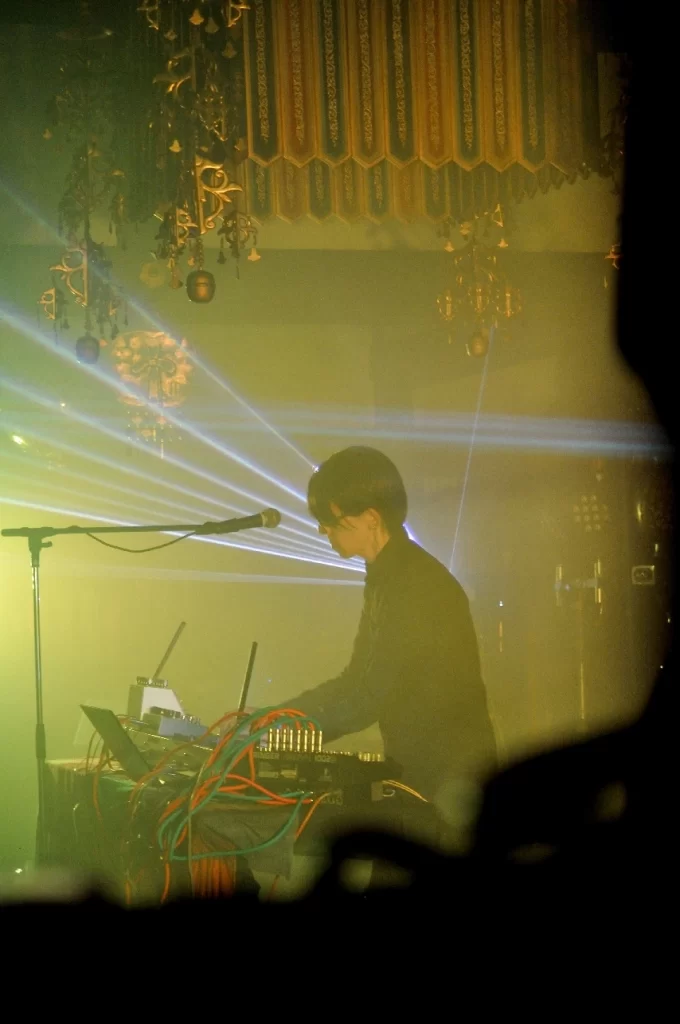On the afternoon of January 7th, many news outlets such as Gigazine and Oricon News reported the death of Hajime Fukuma, a 51-year-old electronic musician and composer. This followed the official announcement on his website that he had died, aged 51, of an aortic aneurysm on the first day of this year.
Born in 1970, the Osaka Prefecture native started his music career in the mid-1980s. He won wider fame in 1994, when he joined P-Model, a legendary techno-pop band in which he played the synthesizer until they broke up six years later. He went on to participate in Yapoos (2000-2005), a band led by avant-pop singer Jun Togawa, and he organised his own unit, soyuz project.
In 2015, Fukuma followed a hunch and moved to Kyoto. He released two solo albums, “Flowers” in the same year and “this is our music” in 2020. For the latter album, the musician carried out a field recording at a hospital in the Nishijin area of Kyoto.
After the relocation, his first live show in Kyoto took place at the Garden of Fine Arts in April, 2016. At that time, he performed in front of an audience with the museum’s ceramic reproduction of “The Last Judgment” by Michelangelo in the background.
Fukuma continued to display his prowess at music venues such as Modern Times in the Kiyamachi area in November, 2016, and green & garden, close to Kyoto Sanjo Shopping Street in August, 2017. The following October he chose the main hall of Ryugan-ji, a Buddhist temple near Kyoto Station, as a concert venue and turned the place into a space filled with futuristic electronic sounds.
Last year, as revealed in the announcement of his passing, he devoted himself to taking care of his health so as to resume his creative activity over the coming year. That said, the synthesizer expert took part in an improvised session at Live Spot Rag, a music cafe in the Kiyamachi area. Unfortunately, the impromptu piece, titled “Red LaBre Code,” ended up becoming Fukuma’s swan song, who parted from the body that had suffered for seven years from the aneurysm.
Many Twitter users in Japan, including those who had worked with him, reacted with sorrow to his sudden parting. Ryugan-ji was no exception, posting a tweet together with a photograph of the late virtuoso in rehearsal. It reads:
Thank you, Fukuma-san. Our temple has a history of over 400 years, and it may have been during your live performance that the main hall became the most similar to the Pure Land.
Kyoto is attractive not only thanks to its traditional aspects, but because of its willingness to accept innovative things, as shown by the presence of contemporary art museums and the longevity of Kyoto Experiment (an annual festival featuring contemporary performing arts). The death of Fukuma, who helped Kyoto’s non-traditional side thrive, has become a loss for the city’s ability to draw a wide variety of visitors. I would like this article to be a reminder of the unorthodox musician and also a support for the power of Kyoto’s unconventional culture.
*******************
References:
(link to the Gigazine article about the passing of Hajime Fukuma)
(link to the Oricon News article about the passing of Hajime Fukuma)
( why he moved to Kyoto)
(about where he lived, the city of Kyoto)
(about the field recording in Kyoto)
(about his live performance at Garden of Fine Arts Kyoto)

